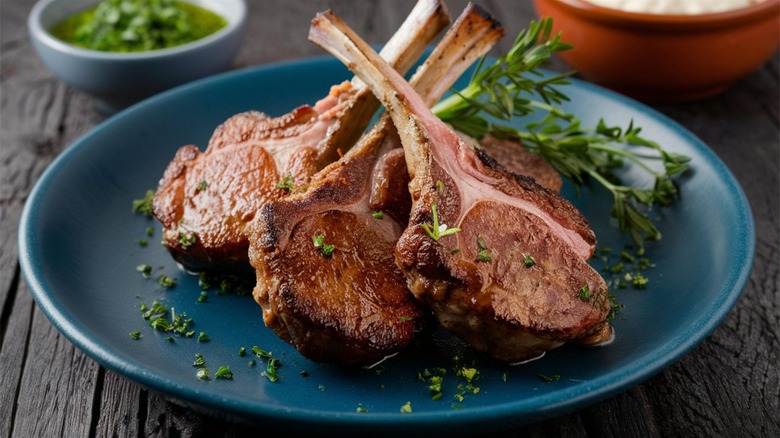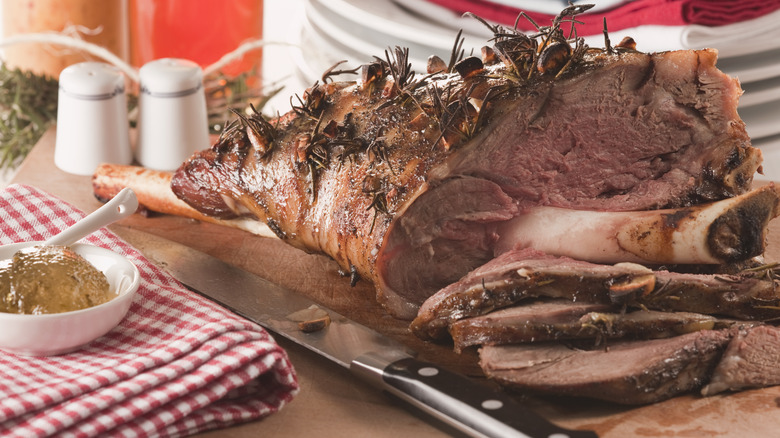The Key Difference Between Mutton And Lamb, And When To Cook With Each
The USDA claims that, on average, each American eats approximately 67 pounds of beef every year, but only a measly 0.7 pounds of lamb, most of which is usually consumed during holidays. In other parts of the world, lamb and mutton are economical proteins, and sheep are raised more than cattle. Lamb is widely accessible in the U.S., but mutton is not and usually needs to be requested from a butcher. Lamb can be gamey unless properly prepared, and mutton is even gamier. Wissam Baki, Executive Chef of AMAL with locations in Miami and Toronto, where he serves vibrant Lebanese cuisine, would like to change our misconceptions about the other red meat.
The key difference between mutton and lamb is the age of the sheep when it's slaughtered. "Mutton, which comes from older sheep," Baki explained, "has a stronger, more robust flavor and tougher texture compared to younger lamb, which is milder and more tender." Most lamb is slaughtered between six and eight months old and hasn't developed a lot of fat and muscle, so it will have lean meat.
When cooking young lamb, Baki told us, "It's better suited for quicker cooking methods and dishes where tenderness is key." Grilling lamb chops is a great way of cooking young lamb, since they only need grilling for two or three minutes per side. However, because mutton is slaughtered when older, it will need a longer cooking time and a different cooking method to make it fork-tender.
Slow cooking tenderizes mutton and enhances its flavor
Mutton is a sheep that's slaughtered when aged between 12 and 24 months or older and has developed strong muscles and built up a lot of fat, which make its meat tough and much more gamey-tasting than lamb. When cooking mutton, Baki recommends, "Long, slow cooking methods to tenderize it and enhance its rich flavor." Braising or stewing mutton would be ideal for breaking down its toughness into melting tenderness. Cooking mutton in a slow cooker will have the same tenderizing effect and also help mellow its gamey flavor. The spices and methods for curries and Middle Eastern dishes serve mutton well, and you could easily substitute mutton for lamb when slow-simmering a comforting lamb saag.
When you're shopping for lamb, be aware that some retailers sell lamb that's 24 months old — so in reality, it's mutton. The lamb that's sold in supermarkets is most often labeled USDA Choice, which means the USDA has inspected the lamb for the quality of its meat depending on its age. Quality grading, however, isn't mandatory — it's up to the processing plant to ask for it — so always look for a USDA grading label (Prime, Choice, or Good) on the package to be sure that you're buying high-quality lamb.

